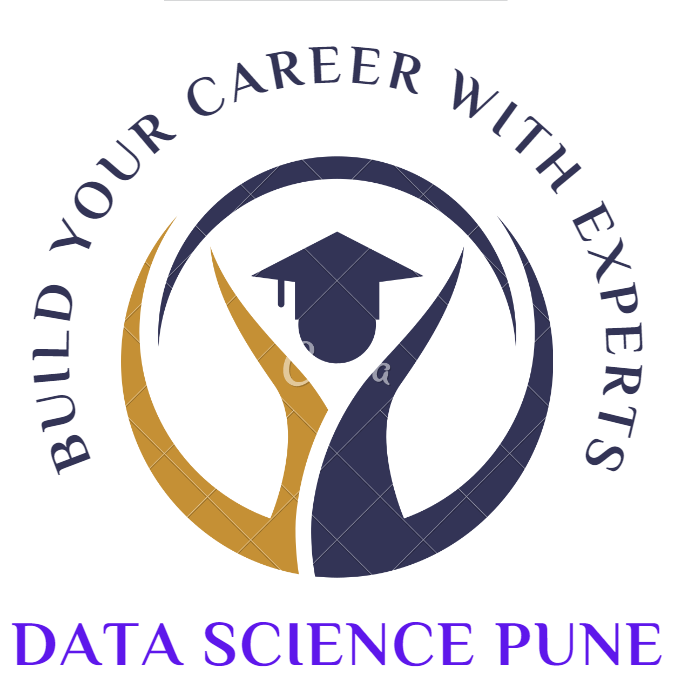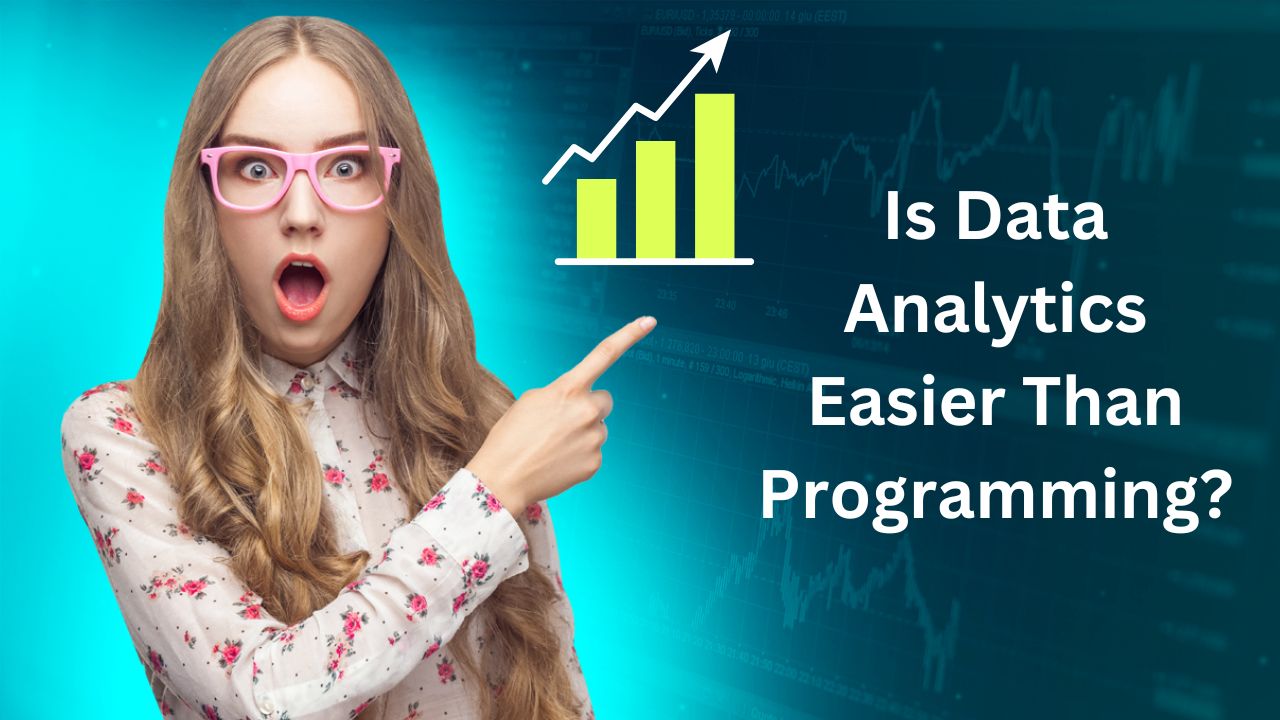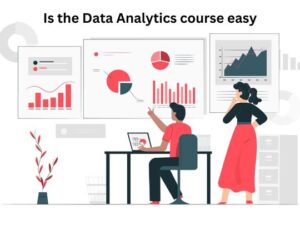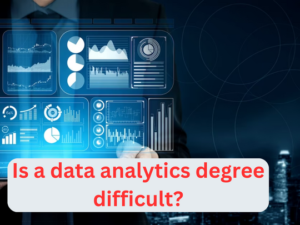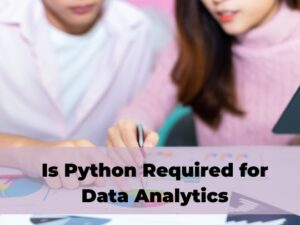You may have this question on your mind if you are thinking of becoming a data analyst. If you want to know if data analyst is easier than programming, you are on the right page. The short answer, it depends. For the detailed answer, you may want to read on.
Looking forward to becoming a Data Scientist? Check out the Data Science Course In Pune Fees and get certified today.
Data analytics is the process that examines raw data to make conclusions, find trends, draw out insights, and solve problems. It uses techniques and technologies from disciplines like computer programming, statistics, mathematics, and data management. Programming is a broader term that refers to the creation and execution of instructions that a computer can follow to perform a specific task. Programming can be applied to various domains and industries, like web development, automation, software engineering, artificial intelligence, and so on.
Learn the core concepts of Data Analytics Course video on Youtube:
Data analytics and programming are often compared or contrasted because they both involve working with data and using coding skills. However, they have different goals, processes, tools, and challenges.
Data analytics focuses on analyzing existing data to answer questions or make predictions, while programming focuses on creating new data or functionality to achieve a desired outcome.
Typically, Data analytics uses programming languages like Python or R that are designed for data manipulation and visualization, while programming can use a wider range of languages depending on the task and platform.
Data analytics faces many challenges, like data quality, privacy, ethics, and scalability, while programming faces challenges, like debugging, testing, security, and compatibility.
Data analytics vs programming
Now, let’s compare and contrast data analytics and programming in terms of their goals, processes, tools, skills, and challenges.
Data analytics and programming are two related but distinct fields that have different goals, processes, tools, skills, and challenges.
- Goals
Data analytics aims to analyze existing data to answer questions or make predictions, while programming aims to create new data or functionality to achieve a desired outcome. For instance, as a data analyst, you may use data to find out the best marketing strategy for a product, while a programmer may create a website or an app for that product.
- Processes
Data analytics involves collecting, cleaning, transforming, exploring, modeling, and communicating data, while programming involves designing, writing, testing, debugging, and maintaining code.
For instance, a data analyst may use SQL to query a database, Python to manipulate and visualize data, and Power BI to create dashboards and reports. A programmer may use Java to write software applications, HTML to create web pages, and Git to manage code versions.
- Tools
Data analytics may use programming languages like Python or R that are designed for data manipulation and visualization, statistical analysis software like SPSS or SAS, and data visualization tools like Tableau or Power BI.
Programming may choose from a wider range of languages depending on the task and platform, such as Java or C# for software development, HTML or CSS for web development, and Git or Visual Studio for software development tools.
- Skills
Data analytics requires skills such as SQL, spreadsheets, critical thinking, data visualization, presentation skills, and machine learning, while programming requires skills such as logic, problem-solving, creativity, debugging, testing, and security.
For example, a data analyst needs to know how to write SQL queries to extract data from databases, how to use Excel formulas and functions to perform calculations and analysis on data sets.
A programmer needs to know how to write code that is clear, free-of-error and delivers the desired results.
- Challenges
Data analytics may face challenges, like data quality, privacy, ethics, and scalability, while programming faces challenges such as debugging, testing, security, and compatibility.
For instance, a data analyst may encounter issues such as missing, inaccurate, or inconsistent data, data breaches or leaks, ethical dilemmas or biases in data collection or analysis, or large and complex data sets that require more resources or time to process.
On the other hand, a programmer may encounter issues such as errors or bugs in code, software failures or crashes, cyberattacks or hacking, or cross-platform or cross-browser compatibility issues.
Common factors: Is data analytics easier than programming?
Many factors can play a role in making the learning process easier or otherwise. Some of these factors may include your background, interests, learning style, and career goals.
For example, if you have a strong mathematical background, you may find data analytics easier than programming, as data analytics involves a lot of statistical analysis and calculations.
On the other hand, someone with a creative mindset may find programming easier than data analytics, as programming involves a lot of logic and problem-solving. Someone who prefers to learn by doing may find both data analytics and programming easier than someone who prefers to learn by reading or watching.
Someone who wants to pursue a career in data science may find data analytics more relevant than programming, as data analytics is a key component of data science.
Therefore, we can say that there is no definitive answer to this question, as different people may have different preferences and experiences.
Advantages of each option
Listed below are some pros of each option. They can help you make an informed decision.
Data analytics pros
- High demand for data analysts across various industries
- Ability to answer questions and make predictions using data
- Opportunity to learn from data and discover new insights
Programming pros
- High demand for programmers across various domains and platforms
- Ability to create new data or functionality using code
- Opportunity to be creative and innovative
Long story short, data analytics and programming are both valuable and in-demand skills that can help you achieve your career goals. However, they are not equally easy or hard for everyone, as different factors may influence your learning and application of these skills. Therefore, you may want to consider your own background, interests, learning style, and career goals when choosing between data analytics and programming. Besides, you should be aware of the pros and cons of each option, and be prepared to face the challenges and opportunities that come with them. Data analytics and programming are both rewarding and challenging fields that require continuous learning and improvement.
Data Science Placement Success Story
Browse Other Courses
- Artificial Intelligence Course in Pune
- Business Analytics Course in Pune
- Cloud Computing Course in pune
- Cyber Security Course in Pune
- Data Analytics Course in Pune
- Digital Marketing Course in pune
- Ethical Hacking Course in Pune
- IoT Certification Course Training in Pune
- Machine Learning Course in Pune
- PMP® Certificate Course in Pune
- Python Course in Pune
- Tableau Course in Pune
Navigate to Address:
360DigiTMG – Data Analytics, Data Science Course Training in Pune
No. 408, 4th Floor Saarrthi Success Square, near Maharshi Karve Statue, opp. Hotel Sheetal, Kothrud, Pune, Maharashtra 411038
089995 92875
Get Directions: Data Science Training
